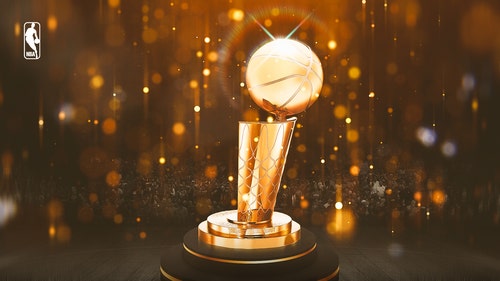Luring defenders into fouls won't be easy in NBA this year
There was a play early last season that generated much attention around the NBA. Atlanta’s Trae Young used his speed to dribble past Brooklyn’s Timothé Luwawu-Cabarrot. And as Luwawu-Cabarrot tried to catch up, Young slammed on the brakes.
Collision. Whistle.
Foul on Luwawu-Cabarrot, who shrugged in disbelief.
“That’s not basketball,” Nets coach Steve Nash pleaded from the bench.
The NBA is apparently inclined to agree. Following suggestions from the league’s competition committee, the NBA has spent time this offseason teaching its referees how to handle it when offensive players are making non-basketball moves with hopes of drawing contact from defenders — something that will be a point of emphasis this season.
Going forward, such plays will merit either a no-call or an offensive foul.
“One of the things that we realized with a free-flowing game that’s played in space is this idea that we want competitive balance,” said Monty McCutchen, the NBA’s senior vice president and head of referee development and training. “We want this idea that both on offense and defense, you have equal opportunities to be competitive and to compete every night. ... And as the rules are written, our players are the best in the world at innovating up to the limits of those rules.”
It falls under the league’s “freedom of movement” rules, which became a major talking point three years ago when the NBA made players cut down on grabbing and dislodging opponents — and that skewed toward helping the offense. By telling offensive players to stop making non-basketball moves to create contact with opponents, that should help defenders.
The non-basketball moves are the major focus of this week’s referee preseason meetings, which run through Thursday, and the new way of officiating those moves was put into action at summer league in Las Vegas last month.
“Some of the best, most historical plays, in the history of our game have been blocks, wonderful defensive stands, protecting the rim or beating someone to position and taking an offensive foul,” McCutchen said. “And we don’t want to lose that. The non-basketball moves is an interpretation change in which, if players launch themselves at abrupt or overt, or have a launch angle that is not part of a basketball move and it becomes abnormal, then we either want that to be a no-call or an offensive foul.”
The competition committee — a group of owners, general managers, coaches and a player representative, a cross-section that ensures all points of view are heard — decided to push for changes in this particular area earlier this year.
Players like Young and Brooklyn’s James Harden are typically the first ones linked to the policy change, though the NBA pointed out a series of plays that could apply under the way such a move will be officiated going forward — and neither Young nor Harden was involved.
But Young is particularly adept at getting to the line, in part because of the way he has been able to lure defenders into contact. The Hawks guard is listed at 6-foot-1 and averaged 8.7 free throw attempts per game last season; the only other time since 2007 that a player 6-foot-1 or less averaged that many in a season was 2019-20, when Young averaged 9.3 per game.
“We have the best athletes in the world,” McCutchen said. “They’re the biggest, and combined with the fastest and quickest, and as a result, our players will adjust to this through how the game is both written in rules and applied in rules. And when they do adjust to this, then our game will flow and be the game that can be played by the best athletes in the world, coached by the best coaches in the world, so that it presents itself as the best game in the world — which we already believe it is.”
___
More AP NBA: https://apnews.com/hub/NBA and https://twitter.com/AP_Sports





